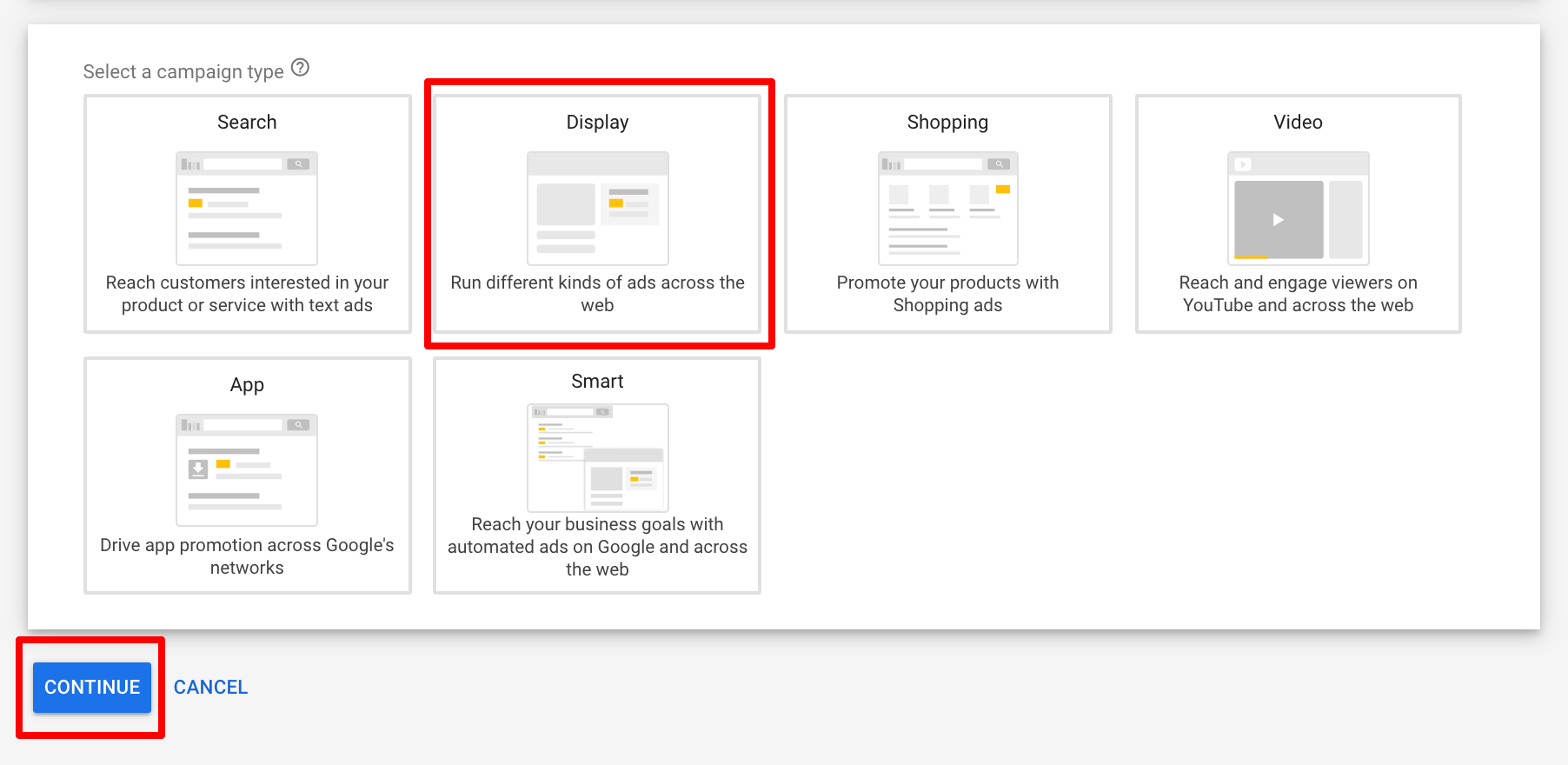Google display ads can be a very effective way to connect with potential customers. In fact, there are a lot of benefits to using them:
- You can target your audience by location, interests, and demographics.
- Ads are displayed on millions of websites across the web.
- You can track your ad results in real time and see which ones are performing the best.
- Ads are visually appealing and can help you stand out from the competition.

If you’re interested in learning more about Google display ads, or if you’re ready to start using them for your business, contact us today! We’d be happy to help you get started.
1. What Are Google Display Ads?
When you think of Google Ads, you probably think of text-based ads that show up alongside search results. But did you know that Google also offers display advertising?
Display advertising is a type of online advertising that uses graphics and images to promote your business. When someone sees your ad, they’ll immediately know what you’re selling. And because display ads are so eye-catching, they’re more likely to catch people’s attention than text-based ads.
Plus, display ads are perfect for branding. They can help you build awareness for your business and create a lasting impression with potential customers. So if you’re not using display ads in your marketing mix, you’re missing out!

2. The Benefits of Google Display Ads
As a business owner, you know that it’s important to be where your customers are. One great way to be on Google is through display ads. Display ads are a type of online advertising that targets customers based on their interests. So rather than showing all of your ads to all of your customers, display ads show relevant ads to those who are most likely to be interested in them.
This makes display ads a great way to reach more people with your message and to connect with potential customers who might not have been aware of your business before. Plus, display ads are proven to be more effective than traditional advertising methods, like print ads or TV commercials.
So if you’re looking for a way to reach more people with your message, Google display ads might be the right solution for you.

3. How to Set Up Google Display Ads?
Ready to give Google Display Ads a try? Here’s how to get started:
First, you’ll need to create a campaign and target your audience. You can choose to target people based on what they’ve searched for on Google, where they are, and even what type of device they’re using.
Next, you’ll create your ad. This is where you’ll need to provide some information about your business, like your SEO-optimized website URL, the type of product or service you offer, and contact information.
Finally, you’ll set your budget and schedule your ad. You can choose to run it for a set number of days or until you hit your budget limit. And that’s it! You’re ready to go.

4. Tips for Optimizing Your Google Display Ads Campaign
So you’re thinking of running a Google Display Ads campaign? Great! But before you get started, it’s important to make sure that your campaign is optimized for success. Here are some tactics that you can use-
- Make sure your ads are relevant to your target audience.
- Use keywords that people are likely to use when searching for your products or services.
- Experiment with different ad formats and targeting options until you find what works best for your business.
- Use tracking tools to measure the effectiveness of your campaign and make necessary adjustments.
- Keep an open mind and be prepared to experiment – the more you test, the better your results will be.

5. How to Measure the Success of Your Google Display Ads
So, you’re thinking of running Google display ads for your business? That’s a great decision! Display ads can be a very effective way of reaching new customers and driving traffic to your site.
But how can you be sure that your display ads are actually successful? Well, thankfully, Google has a number of tools that you can use to measure the success of your ads. One of those tools is the Conversion Optimizer, which helps you to identify the keywords and ads that are most likely to result in conversions.
Another great tool is the Google Analytics URL Builder, which allows you to track how much traffic your ads are getting. And finally, there’s the Google AdWords Reporting Tool, which gives you detailed information on how your campaigns are performing.
So, as you can see, there are a number of ways to measure the success of your Google display ads. By using these tools, you can be sure that your advertising money is being well spent.
If you’re not sure whether paid advertising is right for you, or if you’re not sure how to get started, contact us and we’ll help you get started. We can show you how to create an ad that targets your ideal customers, and we’ll help you track the results so you can see how well your ads are performing.
6. Block the competition
Do you want the website to cease showing ads from brands and advertisers of a similar nature? So, competitive elimination is the answer to your problem. The Google Ad Manager feature stops similar-type companies’ ads from being shown at the same time. To do that, take the following actions:
- Select Admin > Inventory > Labels from the Google Ad Manager home screen.
- Choose New label, then give it a name. To make it later on easier to comprehend, give it a description. Choose “Competitive exclusion” as the label type and save the changes.
- Now navigate to the Businesses, Orders, or Line Items according to your needs. Choose Companies, Line Items, or Orders if you want to stop ads from being served by two different firms. Go to Admin > Companies and choose the two companies to block them from happening.
You must implement the label Competitive exclusion found under Additional options when you choose the Company. Save the modifications last. Display advertising is an effective method to sway customers who are considering doing business with a rival in favor of doing business with you. One strategy for gaining new clients is to use search retargeting to target people who have visited your rival’s website and then give them a fantastic deal on the same product on your own website.
7. Easily tracked to measure
Measuring the success of your display program should be fairly simple if your campaign objectives were set during campaign planning and your key performance indicators (KPIs) were chosen. Display campaigns can be created to target specific groups from the top of the funnel (TOFU) to the bottom of the funnel, just like lead generation programs (BOFU). Your strategy is successful when the outcomes line up with your goals, KPIs, and target audience. The proper data must be tracked if you want to evaluate the performance of your display campaign.
If you’re attempting to achieve these goals, useful info to monitor is as follows:
- Conversions: For instance, if your display ads direct visitors to a landing page where they can obtain a file, complete a form, or make a purchase.
- Engagements: If your advertisements encourage viewers to invest time on a website or an online resource, such as a ROI calculator.
- Site visits: If your campaign directs TOFU leads to your homepage or to a specific page on your website.
Because they show some level of interest from your prospects, site visits are useful to monitor. However, don’t be reluctant to examine your facts in more detail. Even though website visits are beneficial, spending time there is even better because visitors who remain longer are more likely to become customers.
8. Visually Appealing
What first greets the eye is visually appealing. It consists of a design’s colors, shapes, images, fonts, empty space, and overall visual harmony.
In display-style advertisements that are styled after your company or brand and have graphic material. You can be as inventive as you like with exhibit advertisements. Your display ads can stick out by utilizing vivid colors, large text, large images, rich media, audio, video, or even animation. It is important to focus viewers’ attention on the information you want them to see and steer them on the right path.
A headline, text, and URL are all included in display advertising, just like in paid search or pay-per-click advertisements. Display advertising, however, also includes a graphic, a video, or an audio component, which distinguishes them from other types of advertisements. Regular SEM (Search Engine Marketing) ads also have character limits, which restrict the amount of information you can convey. Display advertisements give you the chance to use eye-catching messaging, along with graphics, video, and your brand to stick out and draw viewers in.
9. Support brand awareness and visibility
Brand exposure is measured as a brand’s share of publicity in comparison to its rivals and the sector in which it operates. It is a part of brand awareness, a broad word that denotes a variety of techniques for assessing the sentiment and general knowledge of a brand in a market.
A potential customer must be conscious of your company’s existence before you can attract them. Moreover, consumers now need to meet a company ten times before they consider doing business with them, up from seven only a few years ago, claims Locality.
You can go on the attack with display advertising and reach customers before they are in need of a particular product or service from you. They have a better chance of considering you when they need what your company provides because they have already come across your brand online numerous times.
10. Display ads are targeted
Targeting the demographics most pertinent to your company is crucial when conducting digital marketing campaigns. You can set up specific criteria for your digital display advertising, just like with PPC and Facebook advertising targeting. These parameters can include the websites your display advertisements appear on, the regions they appear in, and the demographics or niche markets they appear to.
Using their zip code as an example, a car dealership can target individuals who are of legal driving age and are browsing websites about cars. You can get the most out of your investment and make sure your display ads are seen by the most pertinent population by targeting them.
11. Allows you to Retarget Customers
Retargeting, which is also known as remarketing, is an online advertising strategy that reaches out to previous users of your website or app, frequently by showing advertisements or sending emails. If a potential lead or client left your website without converting or accomplishing a marketing objective, retargeting offers the chance to reclaim them.
Display ad retargeting involves displaying display advertisements to users based on their prior online activity, including users who have viewed your website but failed to convert into customers.
Probably, you have experienced this. Let us suppose you’re looking at an online home improvement store’s selection of electric drills. You use Google to look for something completely different, and when you arrive at a blog or website created by Google, you see advertisements for electric drills that promote a discount at the same home improvement shop.
They sell a product in which you have already indicated interest. Now that you’re meeting them frequently, you’re not only seeing their name pop up in your field of vision once more but you’re also reading a lot of content that could be the impetus you need to finally decide to buy. Retargeting with display ads is a fantastic method to interact with customers who are already familiar with your brand and go the extra mile to make a purchase.

